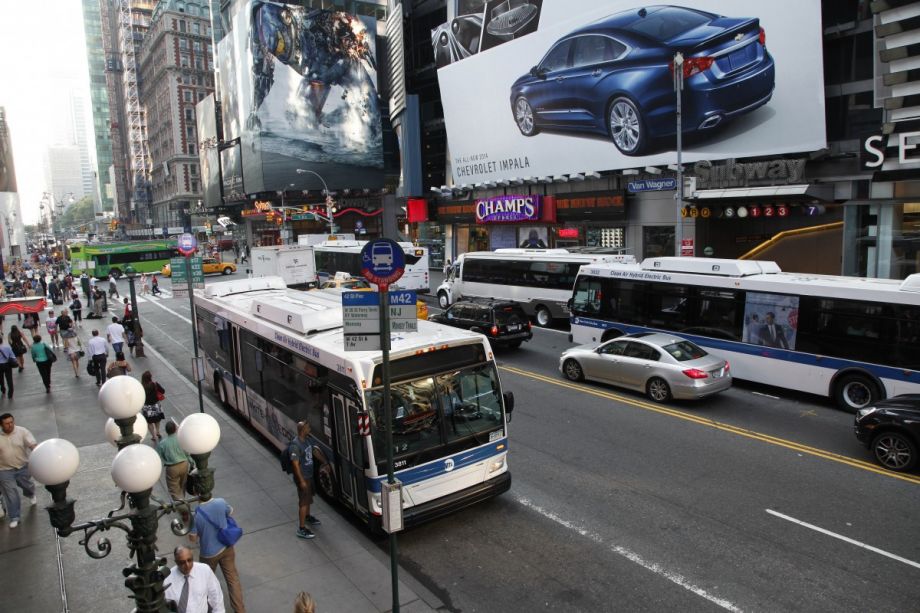On December 23rd, a 78-year-old man was struck and killed by an MTA bus driver as he tried to cross the street in Queens. He was the eighth pedestrian to die after being hit by a public bus in 2014.
Several of the fatal crashes took place when a bus was turning into a crosswalk where the person on foot had the right of way. That was what happened in the last case, the only one in which the driver was arrested (prompting some drivers to refuse to leave their depots in protest).
Just a week after the most recent death, the transit agency announced it is going to pilot a new voice alert system starting next fall, in which an unspecified number of buses will be equipped with audible warning signals that will broadcast a heads-up message to anyone who might be in the bus’s path.
Similar “talking bus” systems, using externally mounted speakers, have been tested in Portland, Oregon (with mixed reviews), Baltimore and Washington, D.C. In Cleveland, transit officials say that the use of the alerts — which in that city consist of a female voice warning that the bus is turning — have contributed to a reduction of bus-pedestrian fatalities to zero since they were installed on 400 vehicles in 2009. The cost for the Cleveland program, the most comprehensive in the nation so far, was $600,000, paid from federal stimulus funds.
In Washington, reaction to the advent of talking buses was met with skepticism by advocates. “[T]alking buses bully pedestrians into accepting responsibility for an incident that might occur,” wrote Rob Pitingolo at Greater Greater Washington, calling the move “safety theater.” “After all, if someone is unfortunately struck, shouldn’t they have seen it coming? It’s logic designed to distract attention away from the incident itself, and prematurely assign responsibility.”
The noise pollution created by talking buses is of particular concern in a crowded city such as New York. “Degrading the public realm with unnecessary noise doesn’t make anything safer,” wrote street-safety advocate and Streetsblog founder Aaron Naparstek on Twitter, in reaction to the announcement. “It just makes New Yorkers hate the MTA.”
It’s true that in the cacophonous soundscape of a busy New York intersection, one more noise might be more irritating than effective. People will likely be able to subconsciously block out the noise the same way they block out the other auditory offenses in the city — jackhammers, elevated trains, honking, revving engines and the like. Half of the city walks around wearing headphones as it is.
Faced with what is clearly an unacceptable number of MTA-involved fatalities, however, the agency is going to give the talking buses a try. Get ready, New Yorkers, for yet another assault on your eardrums.
The Works is made possible with the support of the Surdna Foundation.

Sarah Goodyear has written about cities for a variety of publications, including CityLab, Grist and Streetsblog. She lives in Brooklyn.

















